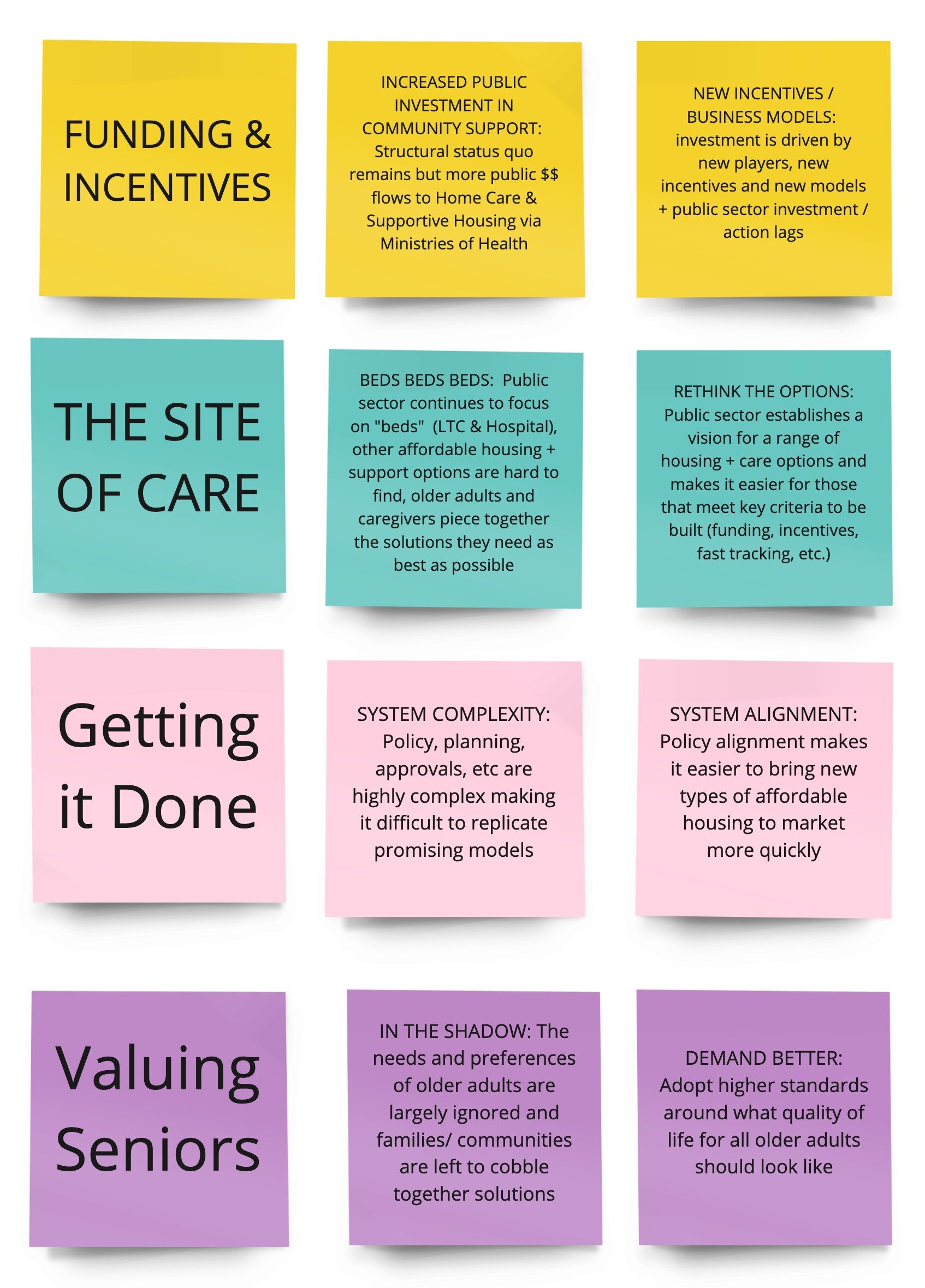Critical Uncertainties
Why develop critical uncertainties?
The concept of critical uncertainties helps us prioritize which driving forces we need to pay attention to the most. There are two axes that matter most:
Importance: Which trends matter most to the problem/opportunity the Building With Mission project is addressing: “How might mission-driven healthcare delivery organizations expand the range and supply of affordable housing for aging Canadians?”
Uncertainty: Which trends carry the most uncertainty about how they might evolve? The reasons for uncertainty are usually based on uncertainty in the external/macro-environment such as consumer beliefs, government policies, or plays made by other actors in this space.
After plotting how trends and drivers, those that emerged as both highly important and highly uncertain were termed “critical uncertainties” and we used them as inputs for the next step.
End result of us mapping our trends and drivers by importance and uncertainty.
How to use critical uncertainties
To identify the critical uncertainties we tried to take a Canada-wide perspective. However, any organization might want to repeat this process such that it’s more customized for its own context. In this case, organizations could include unique trends, drivers and circumstances found in their local context. They could then rank these drivers as important or uncertain differently to arrive at a more localized set of critical uncertainties to drive scenario development.
From critical uncertainties to scenarios
Once we have a few critical uncertainties in mind, it’s important to look in more detail at how they relate to each other. Review the top trends and drivers to ensure they are independent of one another. If two critical uncertainties that are too similar are picked, two unique scenarios (not four) will come out of that process when the critical uncertainties are plotted against each other in the next step.
Zoom in on each critical uncertainty and discuss the spectrum of possibility. Try not to think of these as the “good” and “bad” options, they shouldn’t be that binary.
Here are a few examples of the spectrums of possibility we pulled out of our top critical uncertainties.


